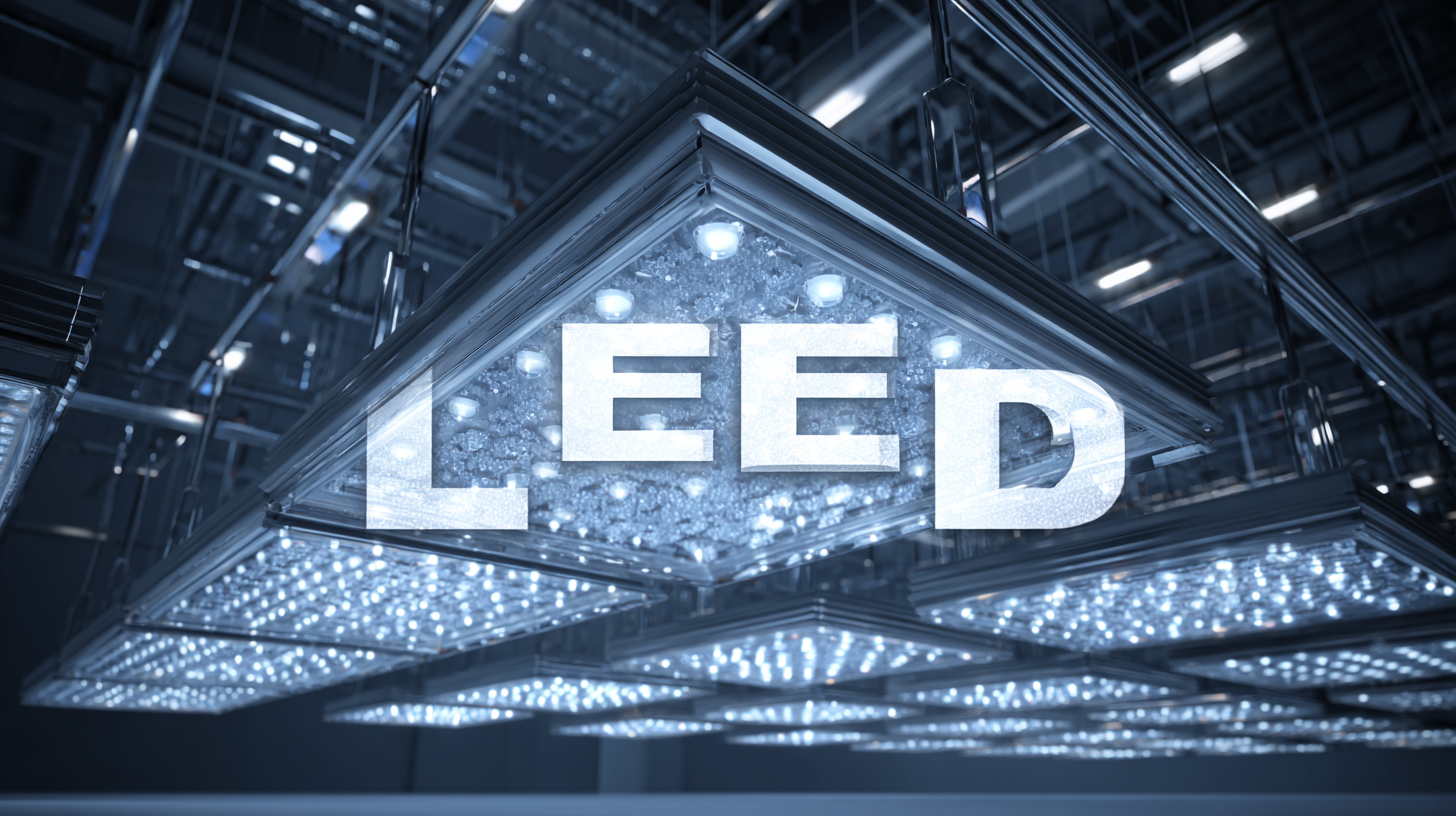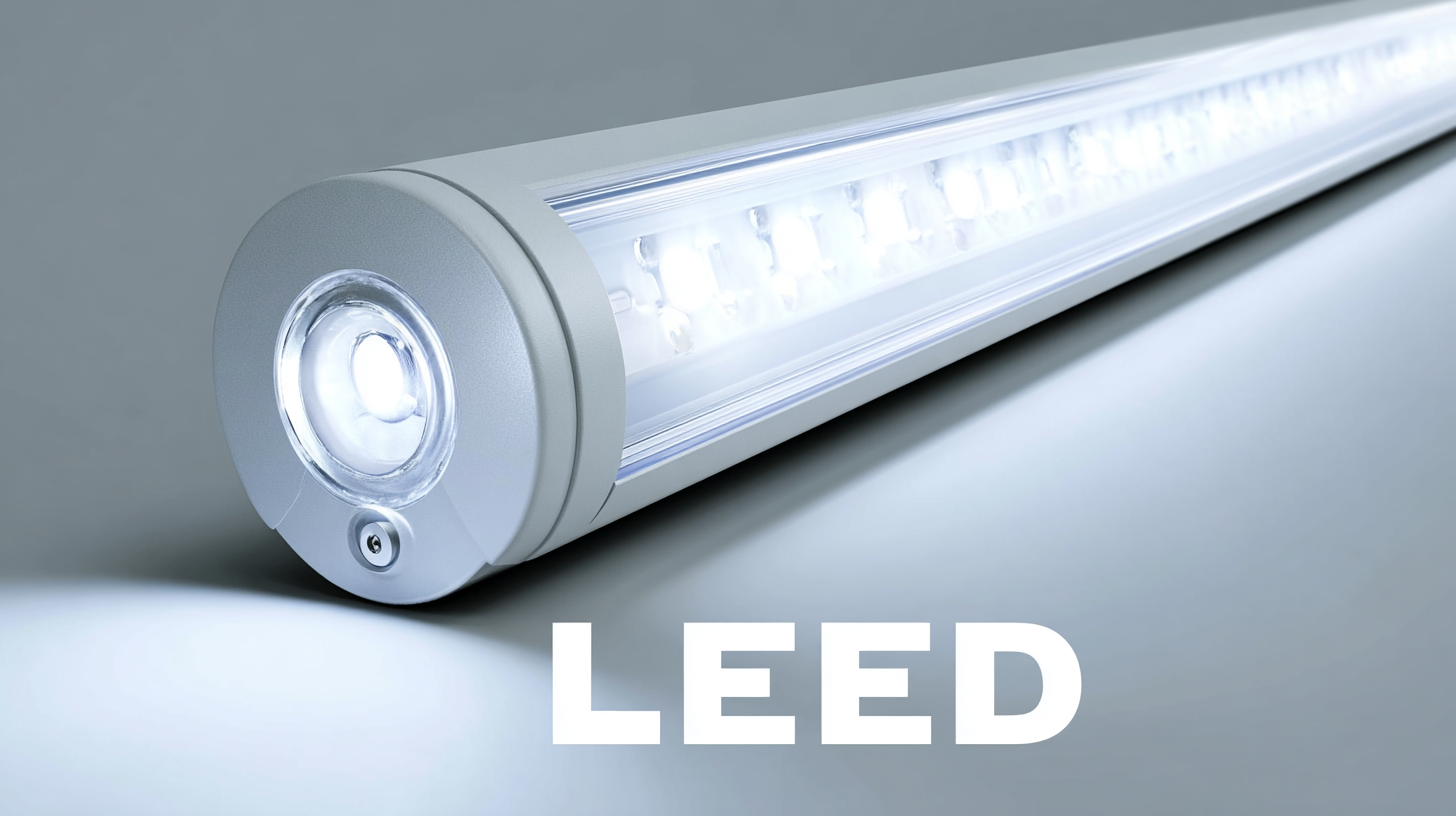Understanding Types of Best Led Fixtures Their Features and Applications in Your Business
In today's rapidly evolving lighting industry, the demand for high-quality LED fixtures has surged, driven by their energy efficiency, longevity, and versatility. According to a report by the U.S. Department of Energy, LED lighting has the potential to reduce energy consumption for lighting by about 25% to 30% by the year 2030. As businesses increasingly seek sustainable and cost-effective solutions, understanding the different types of LED fixtures and their specific applications becomes vital. This knowledge not only aids in enhancing the aesthetic and functional aspects of commercial spaces but also improves operational efficiency.

This comprehensive guide will delve into the various types of LED fixtures, their unique features, and how to identify reputable suppliers, ensuring that businesses make informed decisions that align with their lighting needs and sustainability goals.
Types of LED Fixtures: An Overview of Market Trends and Key Features
The LED lighting market is witnessing significant growth, fueled by advancements in technology and increasing demand for energy-efficient solutions. Recent analyses indicate that the China LED lighting market is projected to reach USD 28.66 billion by 2035, with a compound annual growth rate (CAGR) of 11.2%. This surge can be attributed to various installation types, ranging from commercial to residential applications, each requiring specific LED fixture characteristics that cater to their unique needs.
Key features of LED fixtures include longevity, lower energy consumption, and versatility in design, making them an attractive choice for businesses looking to optimize their lighting systems. As market trends evolve, we see a shift towards smart lighting solutions that offer advanced control and customization options. Understanding these trends and the different types of LED fixtures available can empower businesses to make informed decisions that not only enhance their operational efficiency but also contribute to sustainability efforts within the industry.
Energy Efficiency of LED Lighting: Statistics on Cost Savings for Businesses
In recent years, LED lighting has gained significant traction in the business sector thanks to its energy efficiency and cost-saving potential. Statistics reveal that switching to LED fixtures can reduce energy consumption by up to 80% compared to traditional incandescent bulbs. This shift not only benefits the environment but also leads to substantial reductions in electricity bills for companies. With rising energy costs, businesses are increasingly recognizing the financial advantages of investing in LED technology.
Beyond direct savings on energy expenses, LED lighting offers longer lifespans, resulting in reduced maintenance and replacement costs. Many LED products last up to 25,000 hours or more, significantly outpacing their traditional counterparts. Additionally, companies can benefit from various incentives and rebates offered by governments for adopting energy-efficient practices. As businesses look to optimize their operational expenses while embracing sustainability, the transition to LED lighting emerges as a strategic solution with compelling economic benefits.

Comparative Analysis: LED Fixtures vs. Traditional Lighting Solutions
When it comes to illuminating workspaces, businesses often grapple with the choice between LED fixtures and traditional lighting solutions. LED lighting has gained significant traction in recent years due to its impressive energy efficiency and longevity. For instance, while incandescent bulbs typically last around 1,000 hours, LED fixtures can last up to 25,000 hours or more. This reduction in replacement frequency not only cuts costs but also minimizes waste, making LED options a more environmentally sustainable choice.
In contrast, traditional lighting such as fluorescent and incandescent bulbs can lead to higher energy bills and increased maintenance costs over time. Additionally, LEDs offer versatile design options, allowing businesses to select fixtures that enhance the aesthetic of their environment while providing optimal illumination. Advanced features, such as dimming capabilities and smart controls, further distinguish LED fixtures by enabling greater customization for different tasks and settings. Ultimately, transitioning to LED technology not only aligns with modern energy efficiency standards but also supports a more dynamic and well-lit workspace.

Top Global Manufacturers of LED Lighting: Industry Rankings and Innovations
The LED lighting industry is witnessing a significant transformation as we approach 2025, driven by growing demands for energy-efficient solutions and sustainable practices. Recent reports highlight an anticipated rebound in the LED general lighting market, largely influenced by the need to upgrade and replace existing lighting fixtures during renovation projects. As businesses strive to optimize their energy consumption and reduce carbon footprints, LED technology stands out as a smart choice for both operational efficiency and cost savings.
When considering LED fixtures for your business, pay attention to the features that set them apart. Look for options that offer adjustable color temperatures and dimming capabilities, which can create a more adaptable and conducive working environment. Moreover, consider investing in smart lighting systems that integrate seamlessly with modern technology and allow for remote control and scheduling. This not only enhances energy management but also improves the overall aesthetic of your business space.
As global manufacturers innovate and push the boundaries of LED technology, keep an eye on industry rankings and emerging players in the market. It’s essential to stay informed about the latest trends and innovations, as these advancements can significantly improve your lighting solutions. Engaging with trusted manufacturers that prioritize quality and energy efficiency will ensure your business is equipped with the best LED fixtures tailored to your specific needs.
Understanding Types of Best Led Fixtures Their Features and Applications in Your Business
| Type of LED Fixture | Key Features | Applications | Efficiency (lm/W) | Lifespan (hours) |
|---|---|---|---|---|
| LED Panel Lights | Slim design, even light distribution | Offices, schools, hospitals | 100-150 | 50,000 |
| LED High Bay Lights | High brightness, robust design | Warehouses, manufacturing | 120-160 | 100,000 |
| LED Downlights | Dimmable, directional lighting | Retail, hospitality | 80-120 | 50,000 |
| LED Tube Lights | Easy retrofitting, energy-saving | Commercial, residential | 100-140 | 30,000 |
| LED Flood Lights | Wide beam angle, weatherproof | Outdoor areas, sports facilities | 90-130 | 50,000 |
Applications of LED Fixtures in Various Industries: Success Stories and Case Studies
The adoption of LED fixtures across various industries has been steadily increasing, significantly impacting operational efficiency and sustainability. According to a report by the U.S. Department of Energy, the market for LED lighting is projected to reach $105 billion by 2025, reflecting the widespread integration of energy-efficient lighting systems. Industries such as retail have particularly benefited from the improved visibility and aesthetic appeal offered by LED fixtures.
For example, a case study from a leading retail chain indicated that after upgrading to LED lighting, they experienced a 30% reduction in energy costs alongside enhanced customer satisfaction due to improved store ambiance.
Healthcare facilities have also leveraged LED technology for its versatility and efficiency. A prominent hospital in New York reported a significant decrease in energy consumption after installing LED fixtures in patient rooms and common areas. According to the Energy Information Administration, healthcare facilities can reduce energy usage by as much as 50% by switching to LEDs, while simultaneously providing a more comfortable environment for patients and staff. These success stories not only highlight the transformative impact of LED fixtures but also underscore the importance of strategic energy management in various sectors.






